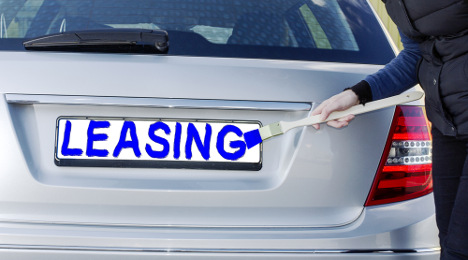Lease penetration nears 27%; risks ahead?

After gathering its third-quarter data, Experian Automotive spotted the highest percentage of vehicles leased since the company began tracking the data publicly in 2006.
While leasing is immensely popular with consumers who want a shiny, new ride at a more affordable price, one national analyst acknowledged there are “some risk factors to keep an eye on as we head into 2016” when considering what might happen to the industry as more units roll over the curb connected to a lease.
First, here are the numbers according to the Q3 2015 State of the Automotive Finance Market report released on Wednesday.
Experian reported that leasing accounted for nearly 27 percent of all new-vehicle transactions in Q3, up from 24.7 percent the previous year.
Findings from the report also showed that the average monthly lease payment was $398 during the quarter, up $1 from a year ago.
“As the price for a new or used vehicle continues to rise, leasing has become a more viable financing option for consumers looking to maintain an affordable monthly payment,” said Melinda Zabritski, Experian’s senior director of automotive finance.
“While consumers can save an average of $84 per month by leasing rather than taking out a loan on a new vehicle, they should make sure leasing fits their lifestyle,” Zabritski continued. “Oftentimes there are mileage caps and other considerations that consumers should familiarize themselves with before entering into a leasing agreement.”
And judging by what was shared in a conference call this week by Alec Gutierrez — senior market analyst of automotive insights at Kelley Blue Book — automakers likely aren’t going to expand mileage parameters or other lease components to protect values as more off-lease units eventually land in the wholesale space. The latest estimate has off-lease volume growing by 800,000 units next year.
During a monthly call Gutierrez joins with Autotrader, the KBB expert also mentioned the expectations of the Federal Reserve potentially making a long-awaited move impacting interest rates. “With rising inventory at auction, that puts some pressure potentially on resale values and in turn residuals, which coupled with rising interest rates could make leasing a bit more of a costly proposition for the manufacturers,” Gutierrez said.
“That ties back into the need to continue to pump money back into incentives,” he added.
Despite what money OEMs might throw on the hood, rising vehicle prices also have given way to record loan amounts for both new and used vehicles.
During the third quarter, the average amount financed for a new vehicle was $28,936, up $1,137 from the previous year.
The average amount financed for a used vehicle was $18,866, up $290 over the same time period.
Furthermore, Experian pointed out the gap between new and used loan amounts also has grown. On average, consumers finance $10,070 less on a used vehicle than on a new one.
Extending loan terms is another method consumers turned to in order to keep monthly payments low. During Q3, Experian determined the percentage of consumers who took out new and used vehicle loans with terms between 61 months and 72 months reached all-time highs.
For new vehicles, approximately 44 percent took out 61- to 72-month loans, and more than 41 percent financed a used vehicle for the same duration.
Analysts noticed the percentage of consumers extending their loans even longer also has increased.
Loans for new vehicles extending 73 to 84 months increased 17.1 percent over the previous year, reaching a Q3 record high of 27.5 percent.
Used-vehicle loans extending in the 73- to 84-month term, however, reached an all-time high of 16.2 percent (a 12-percent increase over the previous year).
Subprime originators gain more market share in Q3
As captive activity also registered gains, Experian highlighted that what it classifies as finance companies — institutions that don’t hold customer deposits but get most of their business from consumers with subprime and deep-subprime credit — gained a healthy amount of market share year-over-year during the third quarter.
The finance company market share reached 13.34 percent in Q3, up 6.4 percent from the previous year.
Meanwhile, Experian indicated one of the biggest shifts in the automotive lending industry during Q3 was the resurgence of captive lenders — the lending companies owned by vehicle manufacturers.
In the third quarter, captive lenders financed 51.6 percent of new-vehicle loans, up from 36.8 percent in Q3 2011. This gain represents the largest market share of new-vehicle financing for captives since the recession.
Market share findings for other lending types show commercial banks still holding the largest share for new and used vehicle loans combined, at 34.7 percent.
“Captive lending has made a comeback since suffering a steep drop-off caused by declining new sales and lender-type shifts during the recession,” Zabritski said.
“This is good news for manufacturers, as their captive finance companies often provide an additional source of revenue as well as a strong pipeline to credit for their dealer networks,” she continued
Experian mentioned five other interesting findings from its Q3 data, including:
• Consumers continue to rely on financing; the percentage of new vehicles financed reached an all-time high of 86.6 percent.
• The average credit score for a new vehicle loan fell to 710, the lowest since Q3 2007.
• During Q3, the average monthly payment for a new vehicle was $482, up $12 from the previous year.
• The average monthly payment for a used vehicle reached $361, an increase of $3 from a year ago.
• The average interest rate for a new vehicle hit 4.63 percent, while the average interest rate for a used vehicle reached 8.76 percent.
Editor Joe Overby contributed to this report.

 View The Latest Edition
View The Latest Edition

